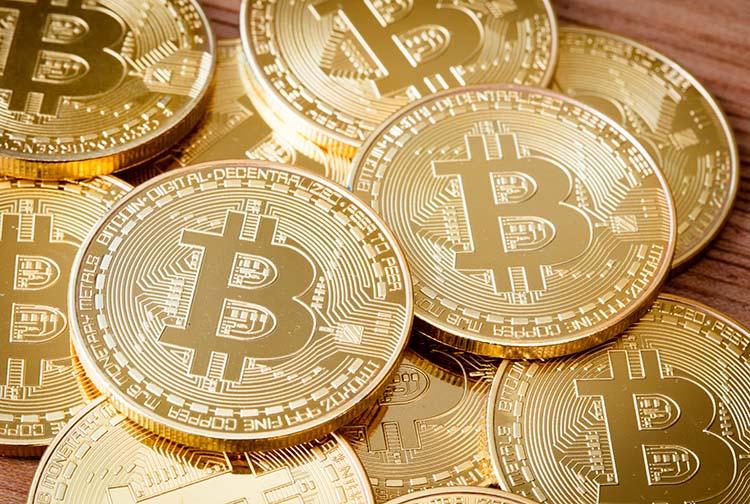

From hyperinflation to digital currencies?
Despite high inflation, we are still far from hyperinflation. Such a scenario would multiply the effects of the crisis and could open the door to the replacement of physical money by digital currencies controlled by central banks.
Annual inflation stood at 8.9% in September, after three consecutive months above 10 per cent, a rate not seen in almost four decades. With limited wage increases, purchasing power in the last year is estimated to have fallen by 7.5% in Spain and 6.2% in the euro area as a whole.
Although the situation in each country is nuanced, there are a number of common factors that have contributed to the rise in inflation. Energy and fuels are the main culprits. And the secondary luxury in this drama would be food and commodities, whose prices have also soared.
A recent World Economic Forum report indicates that in addition to high inflation, real wages and consumer confidence are in free fall, adding headwinds to growth and even raising the prospect of social unrest. As the agency’s survey of leading economists makes clear, “painful months lie ahead”.
The effect of rising interest rates on mortgage repayments and the fact that the global economy is still convalescing from the pandemic will also contribute, so the perfect storm is brewing.
The threat of hyperinflation
Despite the severity of the inflation rates experienced so far, the current crisis can only be considered a minor setback compared to what would happen in the event of an inflationary spiral.
In general, hyperinflation occurs when prices increase by at least 50 % per month. This usually happens when central banks print a lot of money to service their debts or to counteract the effects of a depression, as has been the case in recent years, and this extra money is not offset by corresponding economic growth. By putting much more money into circulation, the real value of the currency can plummet.
Hyperinflation can also occur when individuals lose confidence in the currency in use or when demand for goods and services far exceeds supply.
A vicious circle
As explained in another article, perhaps the best known example of hyperinflation occurred in the 1920s. After the First World War, Germany experienced a monthly inflation rate of close to 30,000%.
In such situations, the value of savings vanishes and people tend to spend money quickly because it depreciates rapidly. The latter forces the central bank to put more banknotes into circulation, thus entering into a vicious circle that further accelerates the rise in prices.
The impact on people’s lives is devastating. Purchasing power plummets and access to basic necessities becomes increasingly difficult: prices of essential goods such as bread can rise daily. In addition, shortages can occur, as part of the population tends to hoard basic goods in fear of further price increases.
A step towards digital currencies?
Various remedies have been applied in the past to deal with hyperinflation, ranging from drastic tax reforms and public spending cuts to the introduction of new currencies.
Hence, some are already warning that the plausible hyperinflation scenario could facilitate the deployment of digital currencies promoted by various central banks. Given the crisis of confidence that fiat money would generate among the population due to its accelerated devaluation, receptiveness to a new currency could be greater.
As we explained in another article, several central banks are working on the development of digital currencies. A country such as China is well advanced in the testing process and more than 200 million people have already used the digital yuan.
In this context, the European Central Bank (ECB) is accelerating the development of its own electronic currency. The initial idea is that the digital euro should not replace physical money but complement it, although the approach could change depending on circumstances. The study phase should be completed by October 2023 and the currency could be operational by 2025.
Countries such as the United States, Sweden and Uruguay are also experimenting with centralised digital currencies. It is a trend that is gaining momentum in the face of the risk of their physical currency losing ground if hyperinflation triggers distrust of fiat money. This is why many central banks are considering issuing a more stable digital currency to rebuild lost confidence among the population.
If you want to discover the best option to protect your savings, enter Preciosos 11Onze. We will help you buy at the best price the safe-haven asset par excellence: physical gold.





👏👏
Gràcies, Daniela!!!
Ho trobo un avenç més en el hipercontrol de les persones,un pas més cap al món feliç de Huxley
La realitat superarà la ficció
Tal i com va tot, avui en dia, això del món feliç cada cop ho veig més lluny i com a una utopia irrealitzable… De totes maneres moltes gràcies pel teu comentari, Alícia!!!
Gràcies!
Gràcies a tu per seguir-nos Joan.
Gràcies per mantenir-nos informats en tot moment
Gràcies pel teu suport, Manel!
Com sempre gràcies per l’informació i per posar-nos al corrent de l’actualitat econòmica internacional i del que pot arribar a passar. Al final l’informació a temps es poder.
Tu ho has dit Lluís, el coneixement ens empodera. Gràcies, pel teu comentari.
👌 molt interessant
Gràcies, Carles!
Nous conceptes, “monedes digitals” per al 2025, moltes gràcies per mantenir-nos informats!👍
No és fàcil mantenir-se al dia en el context d’una ràpida i constant evolució de les noves tecnologies digitals de l’ecosistema macroeconòmic, però és un esforç necessari si ens volem empoderar financerament. Gràcies, Jordi.
El poble és el convidat de pedra d’un àpat que s’ha cuinat en un soterrani. Menges tant si t’agrada com si no, o te’n vas a casa amb
l’estómac buit. Conèixer qui són els cuiners, què i com cuinen és un primer pas per veure-les venir.
Gràcies.
Totalment d’acord. Malauradament, el poble no sempre és conscient de la força que té per canviar els cuiners i decidir què es cuina.